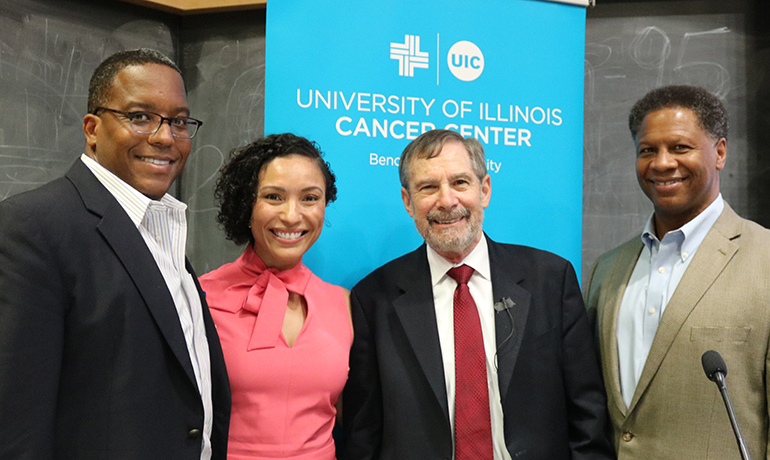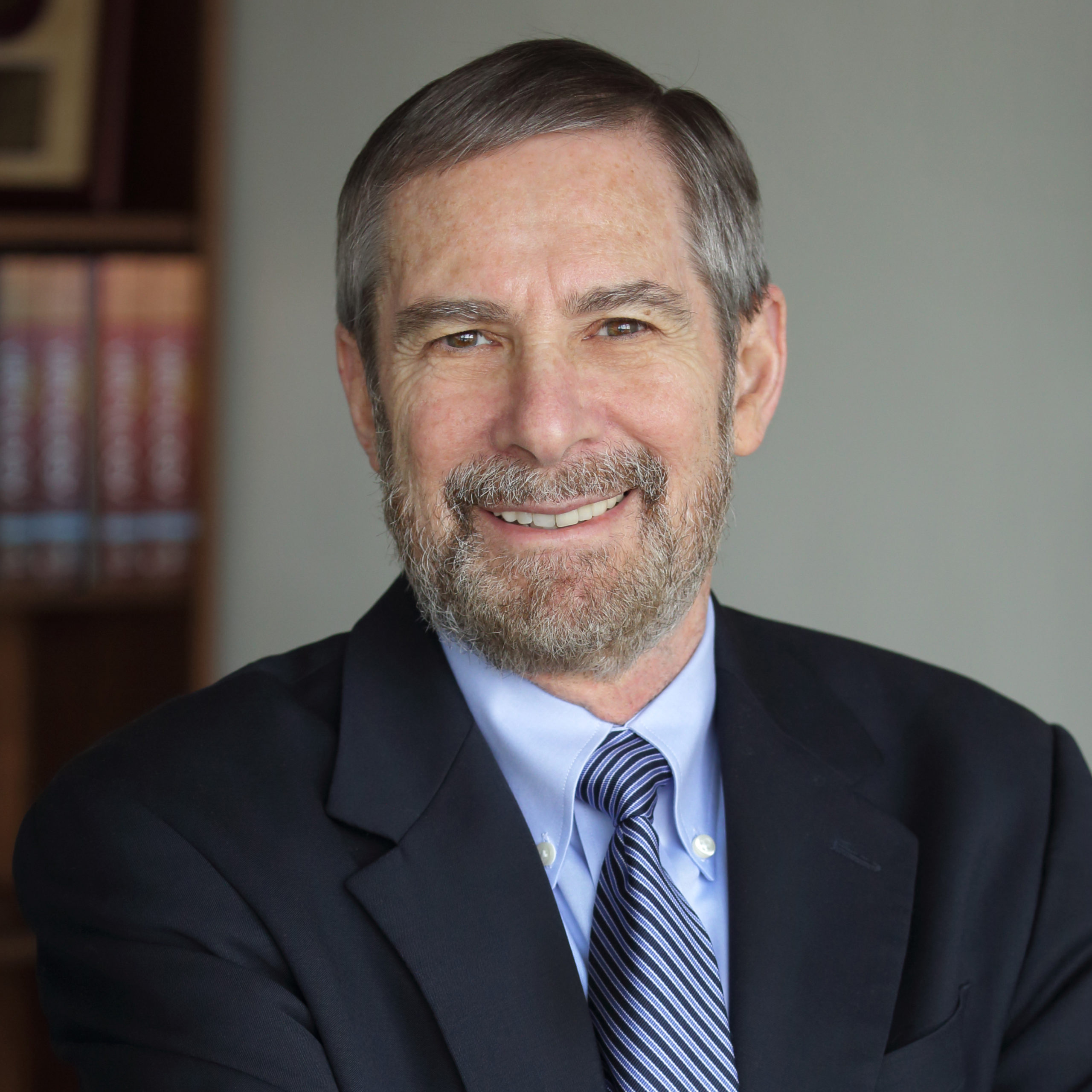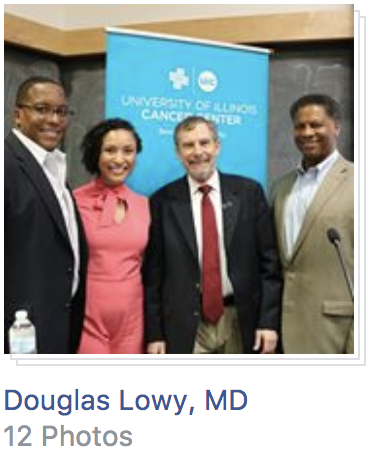
It depends on where you live.

That’s what Douglas Lowy has discovered through his research on HPV-associated cancers. Lowy, MD, acting director of the National Cancer Institute of the National Institutes of Health (NIH) and deputy director of NCI since 2010, presented some of his findings yesterday at the University of Illinois Cancer Center’s Distinguished Lecture Series.
About 90 percent of HPV (human papillomavirus)-associated cancers are cervical, and the majority of women who die of the disease live in less developed regions. In the year 2030, about 363,000 cervical cancer deaths will occur in those areas, while in higher developed regions the death toll is projected to be about 41,000.
 Both men and women are affected by HPV-associated cancers in the United States, Lowy said before a standing room only crowd at the College of Medicine Research Building’s Moss Auditorium. Of the nearly 33,000 HPV-positive cancers, 60 percent occur in women, while 40 percent strike men. Pap screening has reduced cervical cancer incidence by about 80 percent, and the prevalence of HPV-positive oropharynx cancer – a type of head and neck cancer that is predominantly found in men – increased more than three-fold from 1988-2004. The incidence of cervical cancer in black women is now similar to white women, but mortality disparity remains, he said.
Both men and women are affected by HPV-associated cancers in the United States, Lowy said before a standing room only crowd at the College of Medicine Research Building’s Moss Auditorium. Of the nearly 33,000 HPV-positive cancers, 60 percent occur in women, while 40 percent strike men. Pap screening has reduced cervical cancer incidence by about 80 percent, and the prevalence of HPV-positive oropharynx cancer – a type of head and neck cancer that is predominantly found in men – increased more than three-fold from 1988-2004. The incidence of cervical cancer in black women is now similar to white women, but mortality disparity remains, he said.
In populations that have been vaccinated, HPV-based testing for cervical cancer screening will identify more HPV infections with precancer than will cytology, Lowy said. The United States Preventive Services Task Force (USPSTF) recommends that women aged 30-65 undergo HPV-based testing every five years for primary cervical cancer, and women aged 21-65 should undergo cytology testing every three years.
“Many HPV-positive women do not need to be treated because they don’t have precancer,” Lowy said. “Many HPV infections go away without treatment before the lesions become precancerous.”
Developing new technology is one way to overcome the disparities, Lowy said. Artificial intelligence may be employed to convert VIA (Visualization of the cervix with Acetic Acid) from an inferior test to a viable one. However, machine learning and artificial intelligence from digitized images – automated cervical evaluation (AVE) – can greatly increase the ability of the approach to detect cervical precancer.
Automated Visual Evaluation is a machine-learning-based algorithm to predict the presence of cervical cancer. It allows “screen and treat” by providing diagnosis at the time of visit. UNITAID is supporting international clinical trials of AVE that should lead to its approval by the U.S. Food and Drug Administration, Lowy said.
“Computers see something that we don’t,” he said.
Genital HPV is a common virus that is passed from one person to another through direct skin-to-skin contact during sexual activity. Most sexually active people will get HPV at some time in their lives, though most will never know it. A vaccine is available to prevent HPV types that cause most cervical cancers as well as some cancers of the anus, vulva, vagina and oropharynx. The vaccine also prevents HPV types that cause most genital warts.
In less developed countries, the HPV vaccine is used mainly to protect against cervical cancer, and it’s most cost-effective in females. In more developed countries, it protects most men and women against a host of HPV-associated cancers. From 2006-2017, about 107 million girls aged 10-14 years old have received at least one dose of the HPV vaccine. However, Lowy said, less than 5 percent of eligible girls have been vaccinated in low- and middle-income countries, where about 90 percent of cervical cancer deaths occur.
“Worldwide, more than 60 million girls are now born annually,” he said. “To control cervical cancer worldwide, 40 to 50 million girls in each birth cohort should be vaccinated.”
Basic research led to the identification of HPV as the cause of several cancers and to the development of the HPV vaccines (and HPV-based screening), Lowy said. Virus-like particle display is highly immunogenic and the induced antibodies are durable. This is most likely due to long-lived plasma cells induced by repetitive display in the vaccine.
“Control of HPV-associated cancer as a worldwide public health problem may soon be feasible,” Lowy said.
Lowy is just the first of many high-profile speakers to present their work at the UI Cancer Center this year. Otis Brawley, MD, an authority on cancer screening and prevention, will be the featured presenter on Wednesday, August 28. Brawley is the Bloomberg Distinguished Professor at Johns Hopkins University and formerly served as chief medical and scientific officer for the American Cancer Society and director of the Georgia Cancer Center at Atlanta’s Grady Memorial Hospital.
The 3rd Annual Tapas Das Gupta Symposium is scheduled for Wednesday, October 16, featuring Monica Bertagnolli, MD, FACP, FASCO, president of the American Society of Clinical Oncology and professor of surgery, Harvard Medical School. Bertagnolli also serves as chief of the division of surgical oncology at Brigham and Women’s Hospital and is a member of the Dana-Farber Cancer Institute.
The theme of this year’s symposium is “Immuno-oncology: Opportunities to Improve Cancer Care for All Patients.”
Along with Bertagnolli, speakers include Shelley Hwang, MD, MPH, Mary and Deryl Hart Professor of Surgery, Duke School of Medicine; vice chair of research; chief, section of breast surgery; professor of surgery; and professor of radiology. As one of the world’s most foremost experts in early-stage breast cancers, Hwang was named one of TIME’s 100 most influential people for 2016 as a pioneer in her field.
Nita Ahuja, MD, MBA, William H. Carmalt Professor of Surgery, Yale School of Medicine; chair, department of surgery; and chief of surgery, Yale New Haven Hospital, is also scheduled to speak at the conference, named after Tapas Das Gupta, MD, PhD, DSC, professor emeritus of surgical oncology at the University of Illinois College of Medicine.
